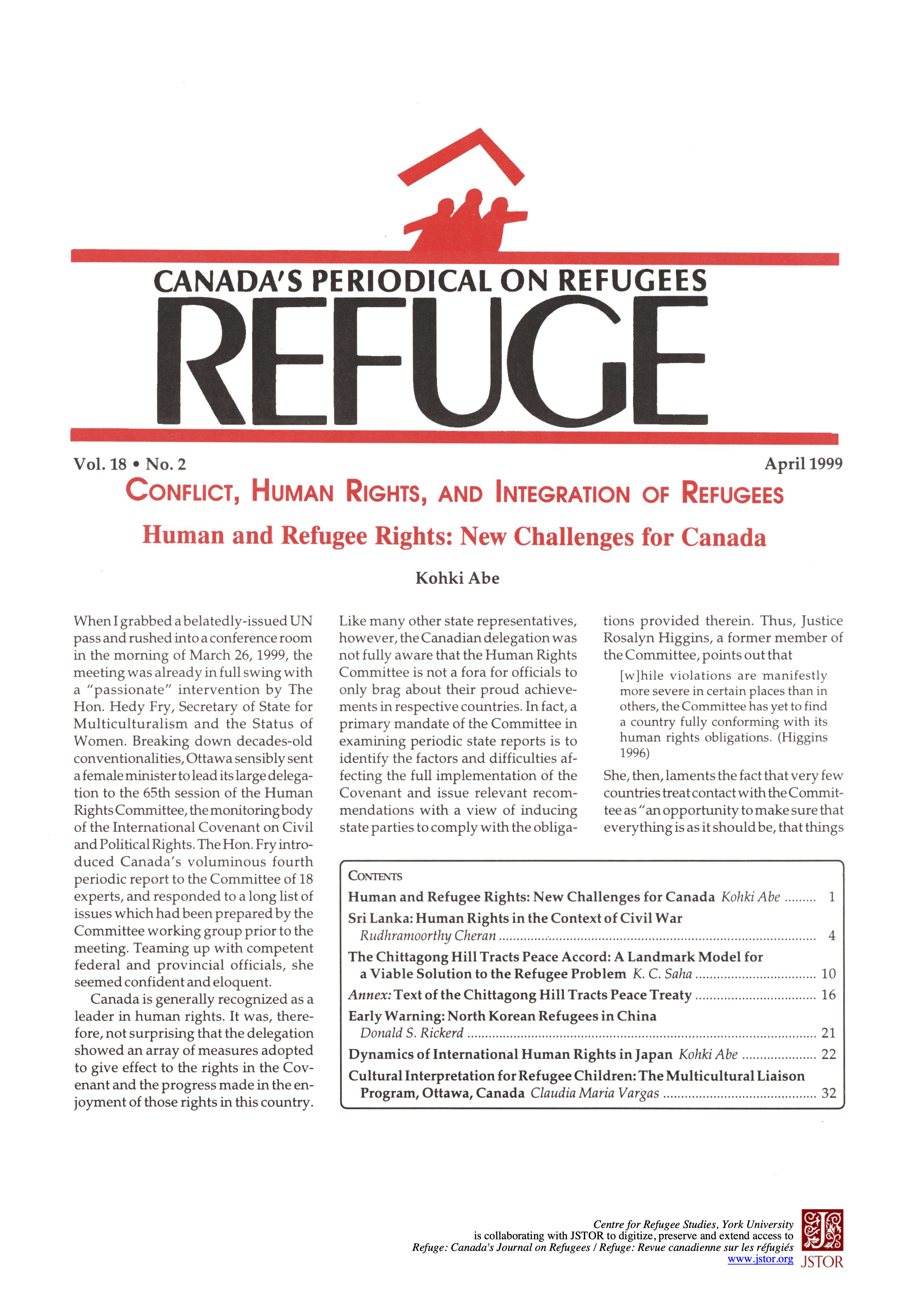The Chittagong Hill Tracts Peace Accord: A Landmark Model for a Viable Solution to the Refugee Problem
DOI:
https://doi.org/10.25071/1920-7336.22008Keywords:
Bangladesh, Indigenous peoples, civil conflict, governance, peace, refugees, reconciliation, repatriationAbstract
The Chittagong Hill Tracts (CHT) area of Bangladesh, home to the Chakma and eleven other major tribes, has experienced civil strife since the early 1970s. The demand for autonomy by the local tribal leaders and the settlement of Bengalees into the CHT sparked armed insurgency. The fighting between the tribal hill people and Bangladlesh army continued for almost two decades, resulting in a large flight of predominantly Chakma refugees into India. Talks between India and Bangladesh officials regarding these refugees resulted in the creation of tribally-led local governments in the CHT, and a rehlilbilitation package for Chakma and other refugees. This process laid the groundwork for the Chittagong Hill Tracts Peace Accord signed on December 2,1997 between the Bangladesh government and the Hill Tracts People's Solidarity Association (PCJSS). Shortly after, about 60,000 refugees returned to the CHT from India, and guerillas surrendered their arms. The objective of this background paper is to examine the Chittagong Hill Tracts Peace Accord and its role in providing a framework for a viable solution to the refugee problem in the CHT. It also highlights those aspects of the Accord which serve as a model for preventing refugee flight and displacement of people in any conflict situation.
Metrics
Downloads
Published
How to Cite
Issue
Section
License
Copyright (c) 1999 K. C. Saha

This work is licensed under a Creative Commons Attribution-NonCommercial 4.0 International License.
Refuge authors retain the copyright over their work, and license it to the general public under the Creative Commons Attribution-Non Commercial License International (CC BY-NC 4.0). This license allows for non-commercial use, reproduction and adaption of the material in any medium or format, with proper attribution. For general information on Creative Commons licences, visit the Creative Commons site. For the CC BY-NC 4.0 license, review the human readable summary.







